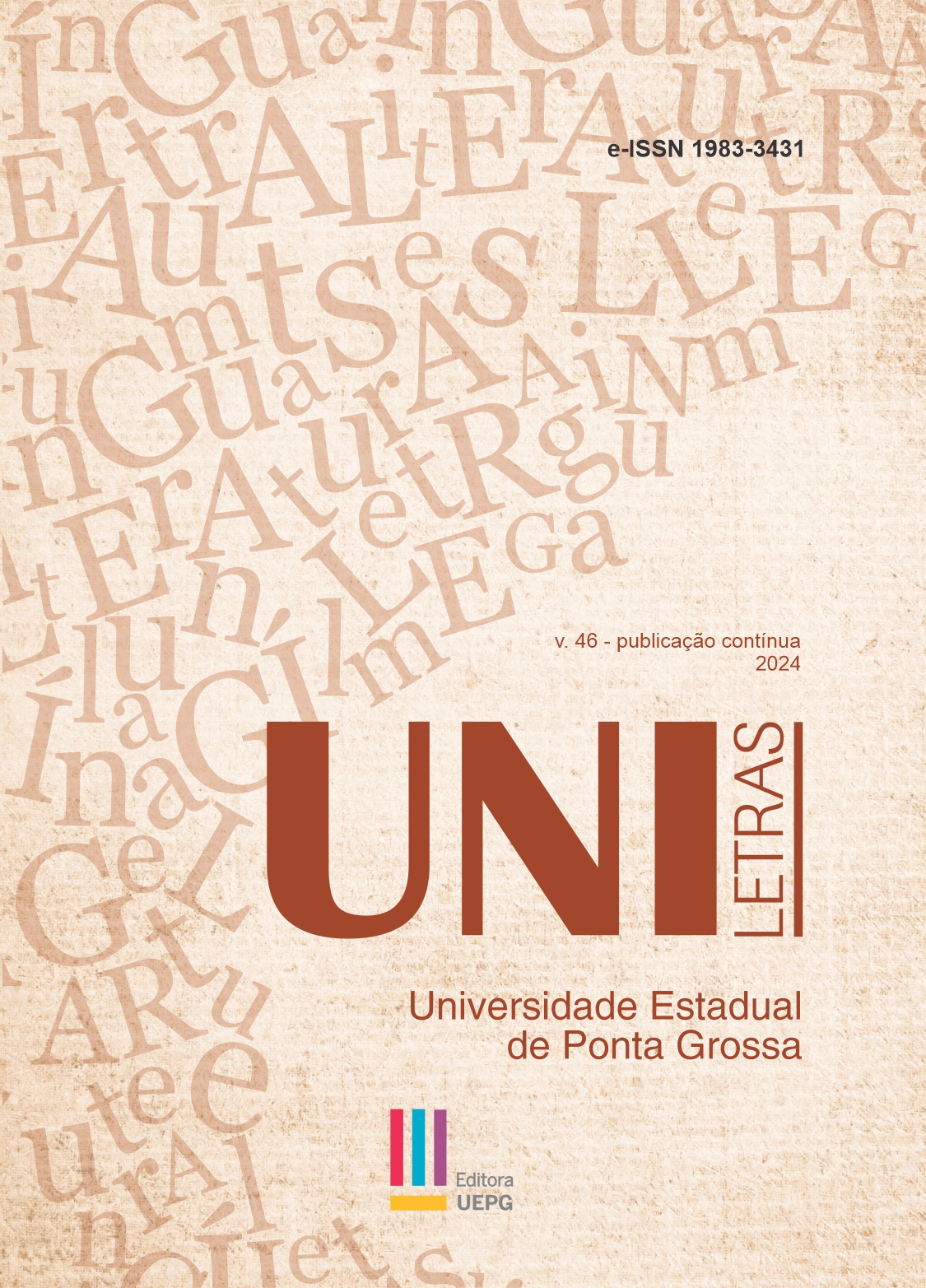ESCOLHAS LINGUÍSTICAS NA TRADUÇÃO DE UM ARTIGO CIENTÍFICO DA LÍNGUA PORTUGUESA PARA A LÍNGUA DE SINAIS BRASILEIRA
Resumo
O presente artigo tem por objetivo analisar as escolhas linguísticas adotadas na tradução de um texto científico da Língua Portuguesa (LP) para a Língua de Sinais Brasileira (Libras). Esta é uma pesquisa do tipo qualitativa, de caráter exploratório e descritivo, a qual consiste na análise do corpus paralelo (LP-Libras) – vídeo. Por envolver duas modalidades de línguas distintas e independentes, oral-auditiva (LP) e visuoespacial (Libras), as conversações, bem como as traduções e interpretações, exigem tomadas de decisões que podem diferir de um sinalizante e/ou tradutor e intérprete em língua de sinais (TILS) para outro. Os resultados revelam que os componentes gramaticais da Libras perpassam a sobreposição de sinais e que os interlocutores e TILS precisam utilizar o espaço de sinalização de forma bem distribuída e mapear/ demarcar/apontar/retomar os referentes (animados ou inanimados), por meio de recursos coesivos nas sentenças em Libras, tais como a dêixis, a anáfora e o role shift. Pretende-se, a partir desta pesquisa, contribuir com os estudos que envolvem a Libras e seus recursos linguísticos na comunicação e na tradução/interpretação em língua de sinais (LS)/Língua Portuguesa (LP).
Downloads
Downloads
Publicado
Edição
Seção
Licença
Autores que publicam nesta revista concordam com os seguintes termos:
a) Os autores mantém os direitos autorais e concedem à revista o direito de primeira publicação, com o trabalho simultaneamente licenciado sob a Creative Commons Attribution License que permite o compartilhamento do trabalho com reconhecimento da sua autoria e publicação inicial nesta revista.
b) Esta revista oferece acesso livre imediato ao seu conteúdo, seguindo o princípio de que disponibilizar gratuitamente o conhecimento científico ao público proporciona maior democratização mundial do conhecimento. Para maiores informações sobre esta abordagem, visite Public Knowledge Project, projeto que desenvolveu este sistema para melhorar a qualidade acadêmica e pública da pesquisa, distribuindo o OJS assim como outros softwares de apoio ao sistema de publicação de acesso público a fontes acadêmicas. Os nomes e endereços de e-mail neste site serão usados exclusivamente para os propósitos da revista, não estando disponíveis para outros fins.

This work is licensed under a Creative Commons Attribution 4.0 International License.





